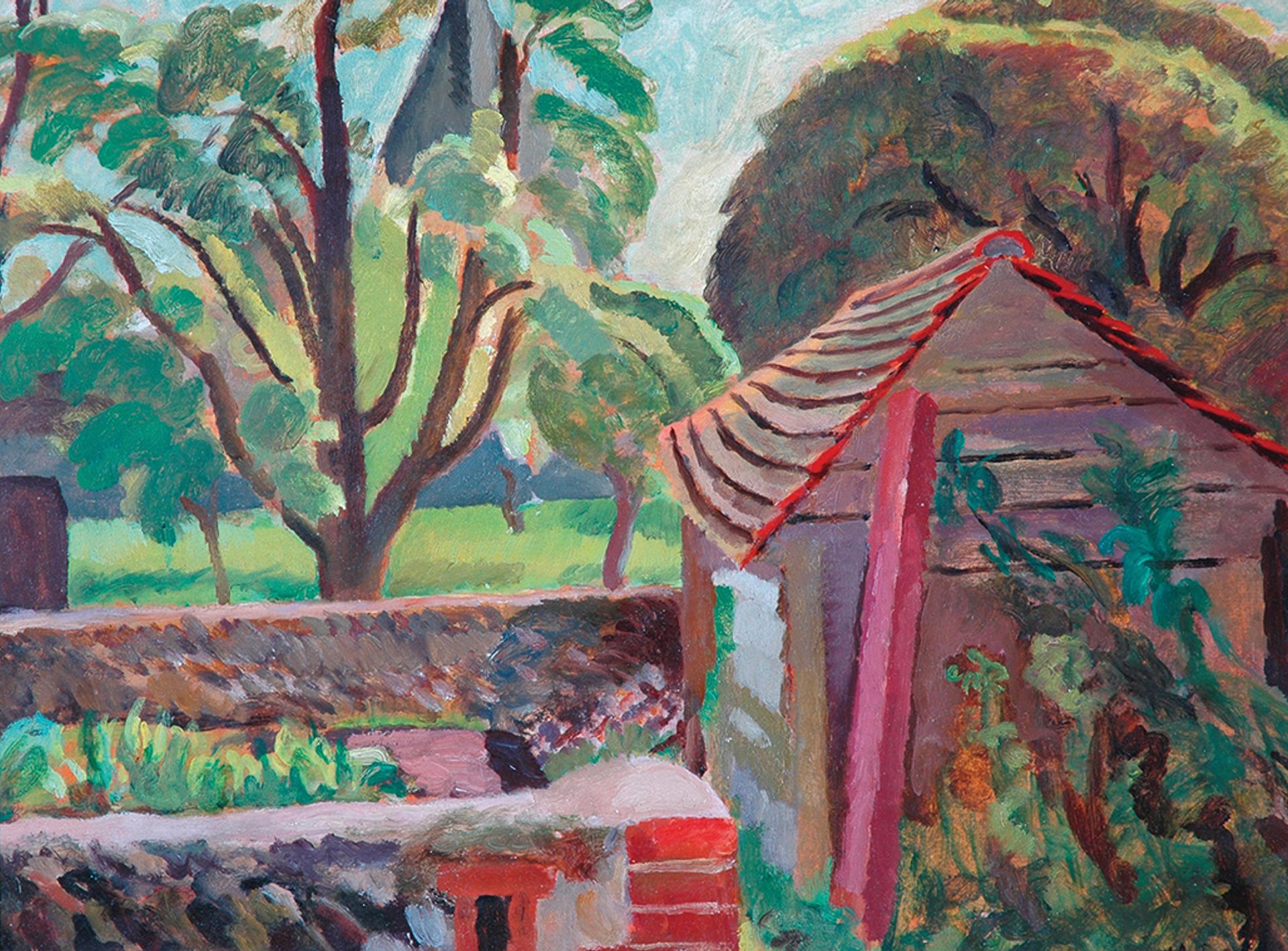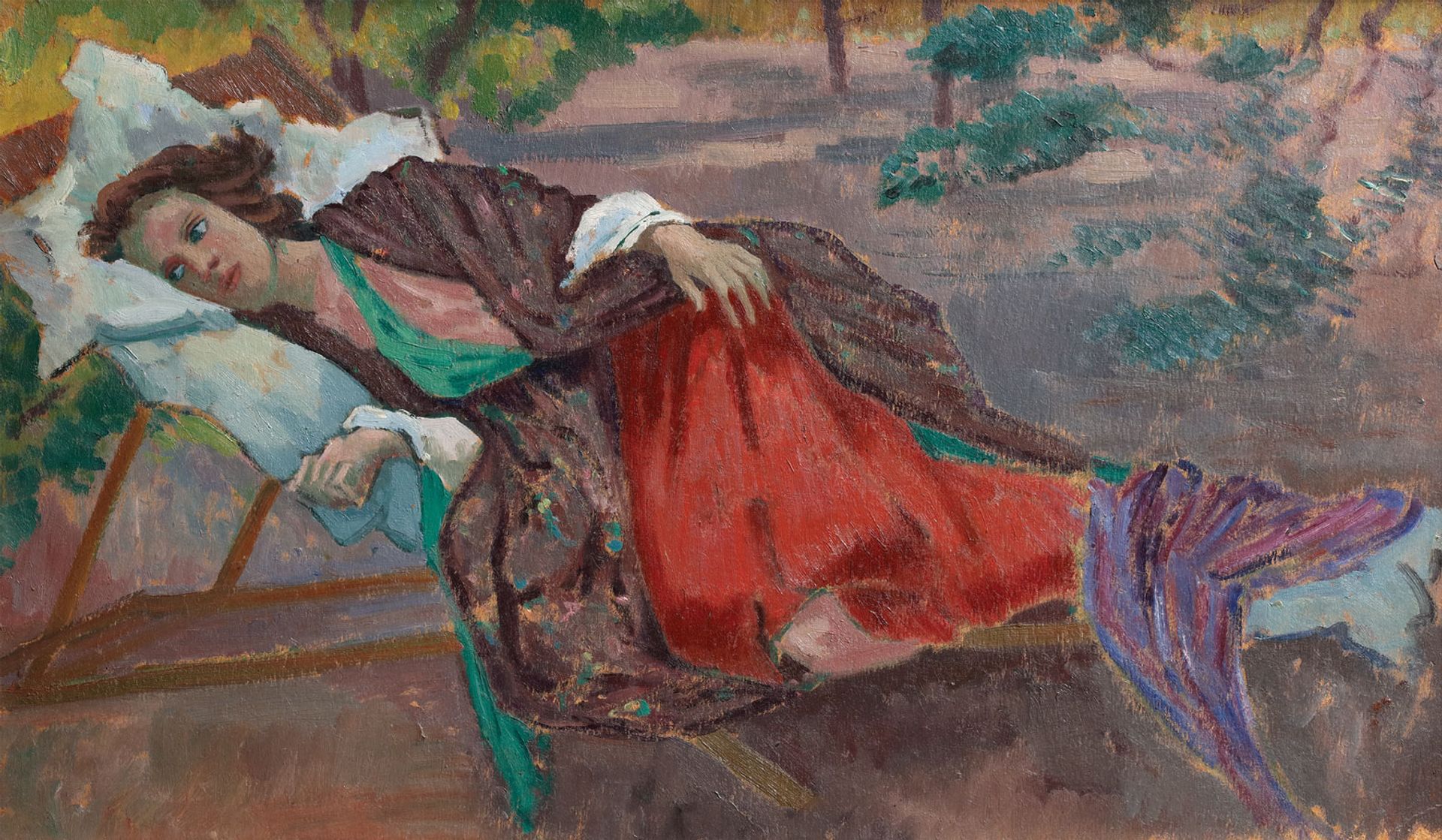“The exhibition came out of thinking about Virginia Woolf’s idea that women need to find a creative space in order to pursue their creative life,” says Claudia Tobin, the curator of Gardening Bohemia: Bloomsbury Women Outdoors at the Garden Museum in London. “And then during lockdown it actually became more poignant as everyone spent so much time in their gardens, at a time of world crisis.”
The resulting show will focus on the four showpiece gardens associated with Woolf and her contemporaries: the aristocrat and patron Ottoline Morrell’s at Garsington, the painter Vanessa Bell’s at Charleston, the writer and garden designer Vita Sackville-West’s at Sissinghurst Castle, and Woolf’s own hideaway, at her Monk’s House cottage.
They were dancing under the moonlight, bathing nude in the pondClaudia Tobin, curator
Tobin’s contention is that these gardens were much more than places to instal herbaceous borders or plant fruit trees. These spaces, she says, were integral to the four protagonists’ intellectual and artistic outlet. “We’re tracing the relationship between the four women through their gardens and through their interest in plants and plant motifs—not just the gardens and the planting and the design, but also the gardens as a space for experimentation and creativity in different forms.”
The range of the exhibition only reinforces the importance of horticulture to the Bloomsbury circle. It will include flower paintings and garden views by everyone from Bell and Duncan Grant, to Roger Fry, Dorothy Brett and Mark Gertler, as well as the Bloomsbury Group’s distinctive painted-over objets d’art, such as a set of flower-painted boots, a china lamp stand and florally decorated boxes. There will be embroidered fabrics and a whole set of photographs, mostly by Morrell, that express the social aspect of the Bloomsbury Group’s garden life. “For them,” Tobin says, “the garden was a space for where things can be redefined, whether that’s in their relationships or creative life. They were dancing under the moonlight, bathing nude in the pond. It represents the kind of freedom that in other circles they would not have been able to express.”

Bell’s Garden at Monk’s House, Sussex (1947); the cottage was home to the artist’s sister, the writer Virginia Woolf © Estate of Vanessa Bell. All rights reserved, DACS 2019/Bridgeman Images
The four gardens were not identical. Garsington, the earliest to be established, was very much a social space—a “theatre”, as Morrell termed it—and the place where the likes of D. H. Lawrence, T.S. Eliot and Dora Carrington rubbed shoulders. Woolf’s cottage garden was a refuge where she could immerse herself in writing and try to stabilise after debilitating incidents of mental illness. Charleston, where Woolf’s sister Bell set up home in 1916, was another social and creative space not unlike Garsington. Meanwhile, Sissinghurst, where Woolf’s lover Sackville-West moved to in 1930, is a large-scale stately home with grounds to match, and now one of the National Trust’s most popular attractions.
Tobin says that their particular innovation was what she calls “garden rooms”, where outside space functions in the same way as indoors—most clearly, perhaps, in the themed gardens at Sissinghurst. At Charleston, Bell and her lover Grant integrated works outdoors and brought flower-inspired design indoors, while the sitting room at Monk’s House was sunk partly below ground level to “draw the garden into the room”, Tobin says. The actual horticulture will also be acknowledged with Matt Collins, the museum’s head gardener, using seeds from original plantings to create, in his words, “a kind of portrait of the artist through a simple curation of plants”.

Roger Fry's Vanessa Bell in a Deckchair (1911) © Philip Mould & Company
Tobin is most pleased, she says, with little-seen items that demonstrate Sackville-West’s interest in Persia, which she visited in the 1920s after her husband, the diplomat Harold Nicolson, was posted to Tehran by the Foreign Office. These include a set of Persian miniatures and a fragment of Persian carpet, a clear influence on Sissinghurst’s famous thyme lawns. “Putting all these pieces of the puzzle together,” Tobin says, “has been really exciting.”
• Gardening Bohemia: Bloomsbury Women Outdoors, Garden Museum, London, 15 May-29 September


